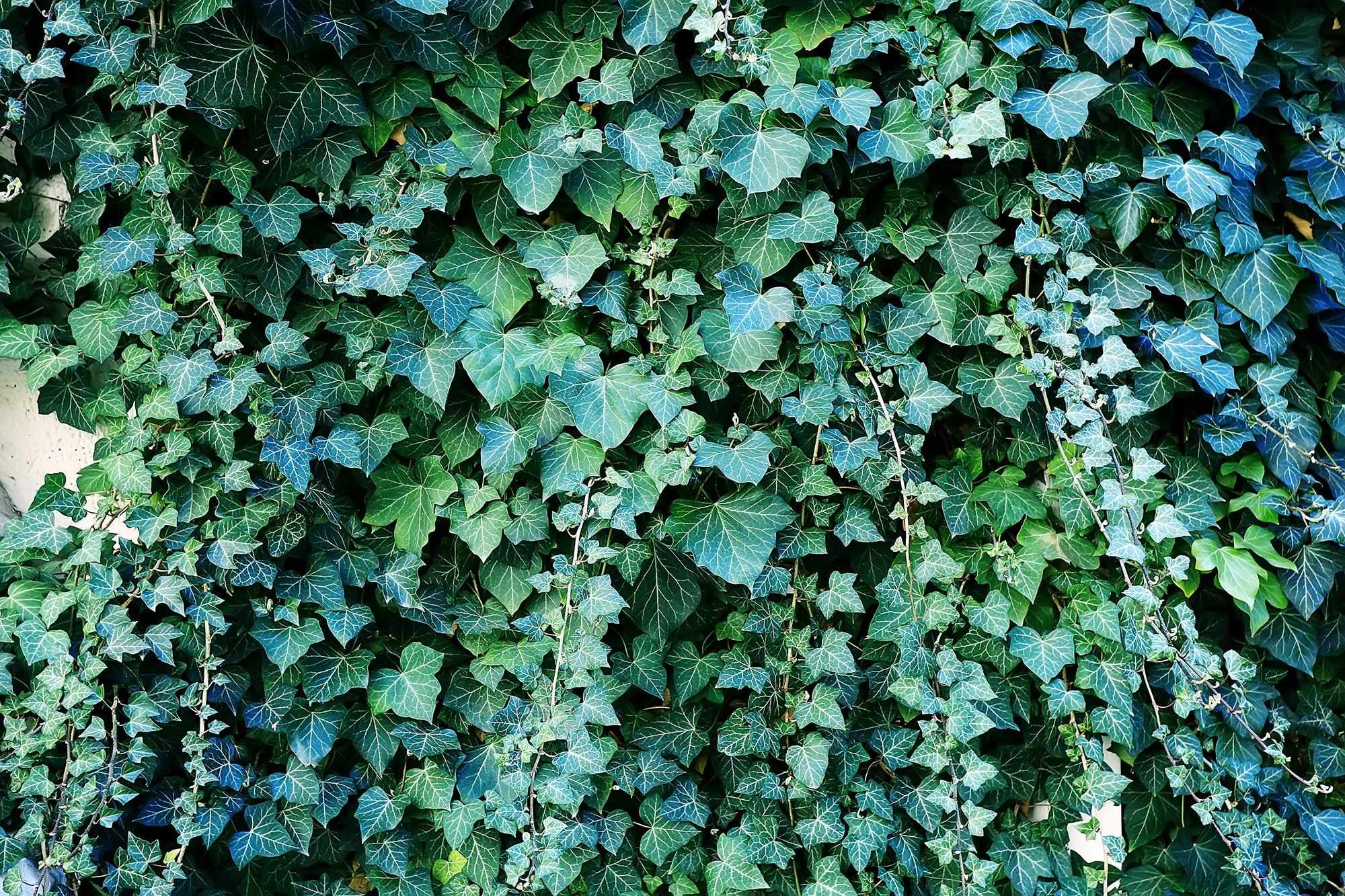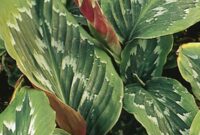Common Pests and Diseases of Variegated English Ivy
Variegated English Ivy (Hedera helix) is a popular choice among gardeners and homeowners for its vibrant green and white foliage that adds an elegant touch to any landscape or indoor setting.
However, like any other plant, variegated English Ivy is susceptible to a range of pests and diseases that can affect its health and appearance.
Common Pests
- Aphids: Aphids are tiny, sap-sucking insects that can infest variegated English Ivy, causing leaves to curl and yellow. To combat aphids, regularly inspect your plants and use a strong stream of water to dislodge them. You can also introduce natural predators like ladybugs or use insecticidal soap as a control measure.
- Spider Mites: Spider mites are arachnids that feed on plant juices, leaving behind a fine webbing on the leaves. To prevent spider mite infestations, increase humidity around your Ivy by misting it regularly. If an infestation occurs, consider using neem oil or insecticidal soap to eliminate them.
- Scale Insects: Scale insects appear as small, immobile bumps on the stems and leaves of variegated English Ivy. These pests can be challenging to eradicate due to their protective shells. A combination of scraping them off and applying horticultural oil can help control scale insects.
- Mealybugs: Mealybugs are soft-bodied insects covered in a waxy substance. They can weaken variegated English Ivy by feeding on its sap. Use a cotton swab dipped in alcohol to remove mealybugs from your plant, and monitor for any reinfestations.
- Whiteflies: Whiteflies are small, white insects that resemble tiny moths. They can cause yellowing and wilting of Ivy leaves. Encourage natural predators like parasitic wasps and apply yellow sticky traps to reduce their numbers.
Common Diseases
- Leaf Spot: Leaf spot is a fungal disease that manifests as small, dark spots on the leaves of variegated English Ivy. To prevent leaf spot, avoid overhead watering, and ensure good air circulation around your plants. Fungicides can be used if the disease is severe.
- Root Rot: Root rot is a common problem, especially in overwatered Ivy plants. Ensure well-draining soil and pots with drainage holes to prevent waterlogged roots. If you suspect root rot, trim affected roots, repot the plant in fresh soil, and reduce watering.
- Powdery Mildew: Powdery mildew appears as a white, powdery substance on the leaves and stems of variegated English Ivy. Improve air circulation, reduce humidity, and apply fungicidal treatments to control this disease.
- Bacterial Leaf Spot: Bacterial leaf spot causes dark, water-soaked lesions on Ivy leaves. Remove affected leaves promptly, and avoid overhead watering to prevent the spread of this bacterial disease.
- Crown and Root Rot: Crown and root rot are caused by various fungi and can lead to plant decline or death. To prevent these diseases, avoid overwatering, provide proper drainage, and ensure that your Ivy’s crown is not buried too deeply in the soil.
Preventative Measures
To minimize the risk of pests and diseases affecting your variegated English Ivy, consider the following preventative measures:
- Regular Inspections: Conduct regular inspections of your Ivy to catch any issues early.
- Proper Watering: Water your Ivy consistently but avoid overwatering, as excess moisture can lead to root rot and fungal diseases.
- Well-Draining Soil: Use well-draining potting soil and ensure pots have drainage holes to prevent waterlogged roots.
- Isolation: Isolate new plants for a few weeks to ensure they are pest and disease-free before placing them near established plants.
- Quarantine: If you suspect an infestation or disease, quarantine the affected plant to prevent it from spreading to others.
- Good Hygiene: Wash your hands and gardening tools before working with your Ivy to prevent the spread of pests and diseases.
In conclusion, while variegated English Ivy is a stunning addition to any garden or indoor space, it is essential to be vigilant and proactive in preventing and managing common pests and diseases.
Regular care, proper maintenance, and prompt action can help keep your Ivy healthy and beautiful for years to come.
The Many Shades of Variegation: Understanding Ivy Leaf Patterns
Variegated ivy, with its mesmerizing mix of green and white, is a popular choice among plant enthusiasts and gardeners alike.
The intricate leaf patterns of variegated ivy can add a touch of elegance and sophistication to any space.
The Basics of Variegation
Before we dive into the various leaf patterns, let’s start with the basics. Variegation is a phenomenon in which a plant’s leaves exhibit variations in color, typically resulting in patches, stripes, or streaks of colors other than green.
These variations can appear as shades of white, cream, yellow, or even pink. Variegation is caused by a combination of genetic mutations and environmental factors, making each variegated ivy unique.
The Classic Variegated Ivy
The most common variegated ivy variety features leaves with a creamy white border or margin surrounding a green center.
This classic variegation pattern is known as “marginal variegation.” It’s seen in varieties like Hedera helix ‘Glacier’ and ‘Sagittifolia.’
Streaked Variegation
Streaked variegation is characterized by irregular streaks of white or cream that run through the green parts of the leaves.
These streaks can vary in width and length, creating a visually striking effect. An example of a streaked variegated ivy is Hedera helix ‘Oro di Bogliasco.’
Speckled Variegation
Speckled variegation features tiny spots or specks of white or cream scattered across the green leaf surface.
The effect is subtle yet charming, giving the leaves a dappled appearance. Hedera helix ‘Eva’ is a well-known variety that displays this type of variegation.
Lace-Like Variegation
Lace-like variegation is a unique pattern characterized by intricate, irregular white markings that resemble delicate lacework.
The white patterns often appear as if they’ve been carefully painted onto the green leaves. Hedera helix ‘Dentata Variegata’ is a prime example of lace-like variegation.
Sectorial Variegation
Sectorial variegation occurs when certain sections or sectors of a leaf exhibit variegation, while other parts remain entirely green.
This creates a striking contrast between the variegated and non-variegated areas. Hedera helix ‘Buttercup’ is a well-known variety that displays sectorial variegation.
Chimera Variegation
Chimera variegation is one of the most fascinating and complex forms of variegation. It results from a combination of different cell types within a single leaf.
As a result, you’ll find distinct patterns of variegation, often with sharp boundaries between the variegated and green portions. The famous Hedera helix ‘Manda’s Crested’ exhibits chimera variegation.
The Role of Genetics and Environment
Understanding variegation in ivy leaves involves both genetic and environmental factors.
Genetic mutations are responsible for the development of variegated ivy varieties, but these patterns can be influenced by environmental conditions as well.
- Genetic Mutations: Genetic mutations can occur spontaneously, leading to variegation. These mutations affect the production of chlorophyll, the green pigment responsible for photosynthesis. Variegation occurs in areas where chlorophyll production is reduced or absent.
- Light and Temperature: The intensity and duration of light exposure can influence the appearance of variegated ivy leaves. More light tends to enhance variegation, while low light conditions may cause variegated patterns to fade.
- Cultural Practices: Proper care and maintenance, including appropriate watering and fertilization, can help maintain the health and vibrancy of variegated ivy.
- Propagation: When propagating variegated ivy, it’s important to use cuttings from variegated sections of the plant to ensure that the new growth retains the variegated characteristics.
Caring for Variegated Ivy
To keep your variegated ivy looking its best and to preserve its unique leaf patterns, consider the following care tips:
- Light: Variegated ivy thrives in bright, indirect light. Avoid exposing it to direct sunlight, as this can scorch the leaves.
- Watering: Keep the soil evenly moist but not waterlogged. Allow the top inch of soil to dry out between waterings.
- Humidity: Variegated ivy benefits from higher humidity levels. Mist the plant or place a tray of water near it to increase humidity.
- Fertilization: Fertilize your ivy with a balanced, water-soluble fertilizer during the growing season (spring and summer). Reduce or eliminate fertilization during the dormant season (fall and winter).
- Pruning: Regularly prune your ivy to maintain its shape and encourage bushier growth. Pruning can also help remove any non-variegated sections that may appear.
- Repotting: Repot your variegated ivy when it becomes root-bound or outgrows its container. Choose a slightly larger pot with good drainage.
- Pest and Disease Control: Keep an eye out for common pests such as aphids, spider mites, and mealybugs. Treat any infestations promptly to prevent damage to your ivy’s leaves.
Conclusion
Variegated ivy’s mesmerizing leaf patterns make it a captivating addition to any indoor or outdoor space.
Understanding the different variegation patterns and the factors that influence them can help you appreciate the beauty and uniqueness of each variegated ivy variety.
With proper care and attention, your variegated ivy can thrive and continue to showcase its stunning leaf patterns for years to come, adding a touch of elegance to your botanical collection.
Whether you choose the classic marginal variegation, streaked patterns, or lace-like designs, variegated ivy is sure to bring charm and sophistication to your garden or home.



